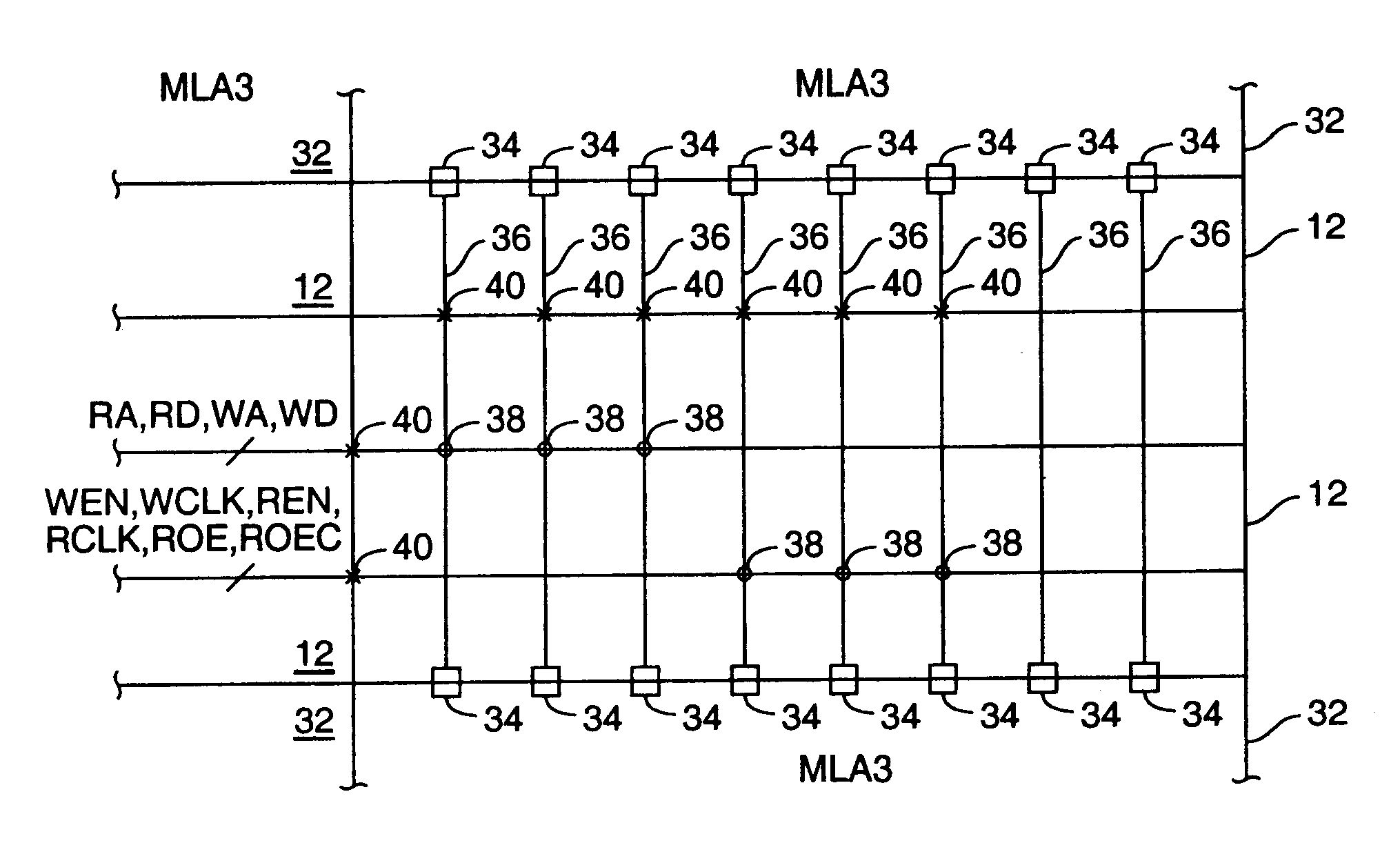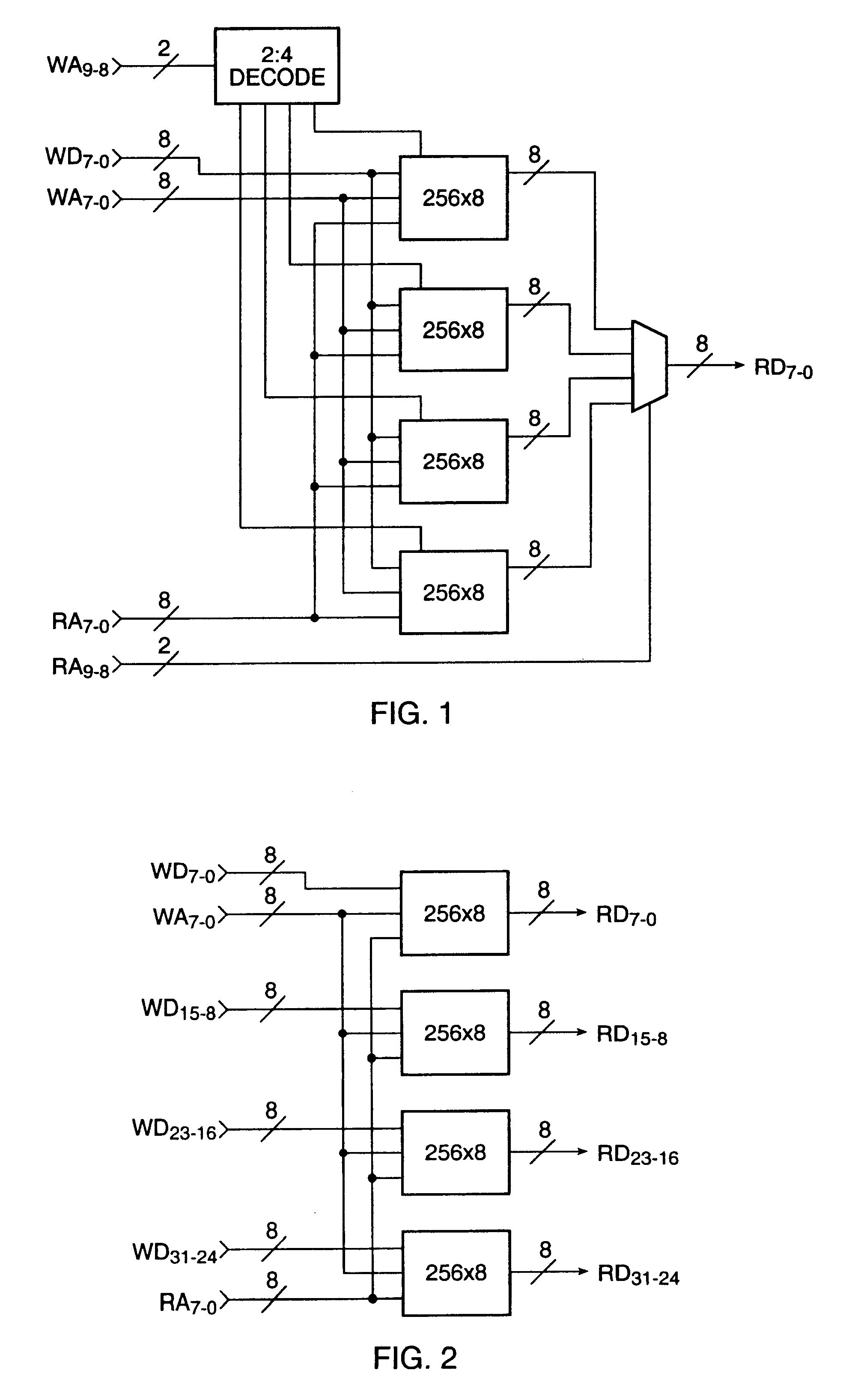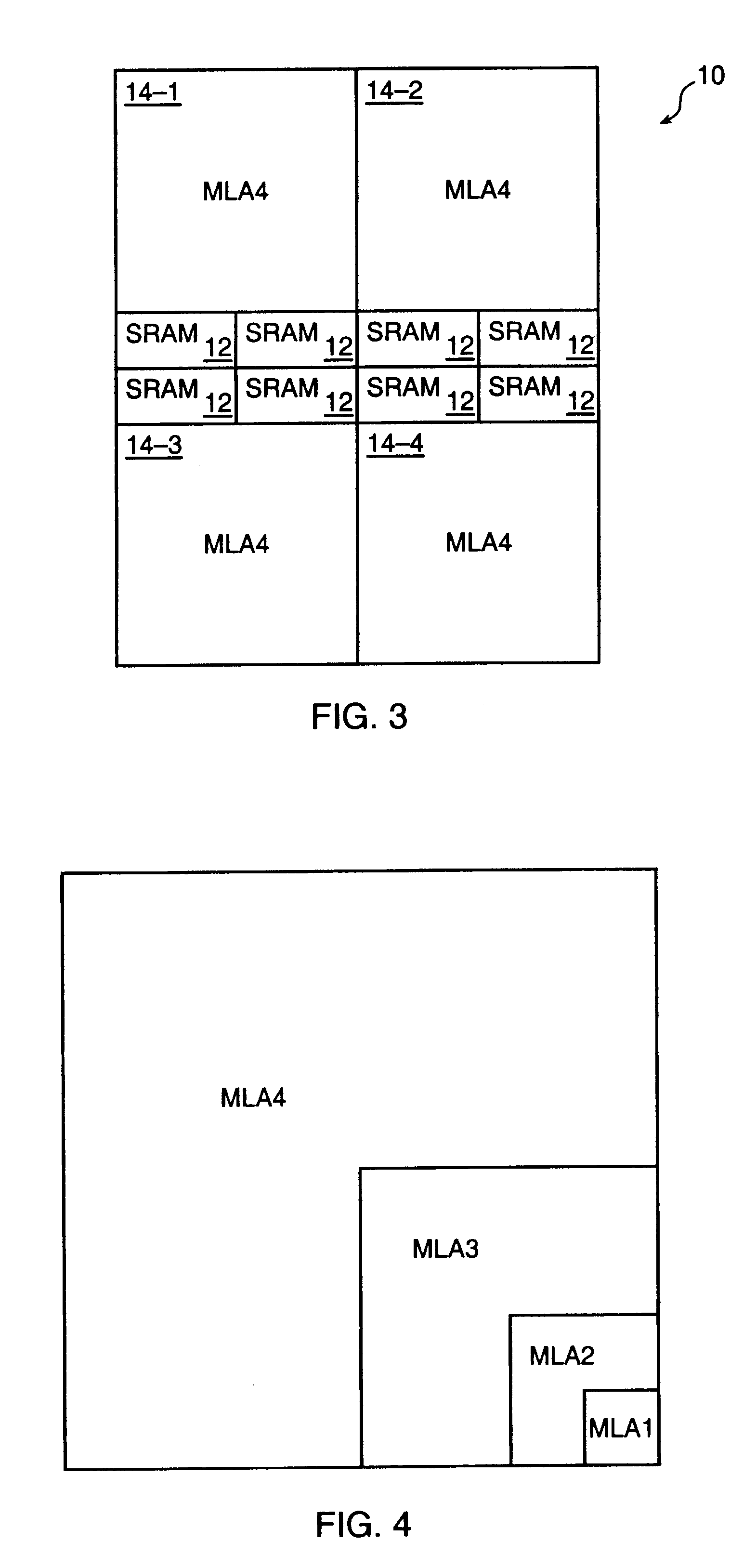SRAM bus architecture and interconnect to an FPGA
a sram bus and interconnection technology, applied in pulse techniques, instruments, peptide sources, etc., can solve the problems of undesirable fpga design, less than satisfactory solutions, and insufficient memory provisioning by having other than explicitly dedicated sram blocks included in the fpga
- Summary
- Abstract
- Description
- Claims
- Application Information
AI Technical Summary
Problems solved by technology
Method used
Image
Examples
Embodiment Construction
Those of ordinary skill in the art will realize that the following description of the present invention is illustrative only and not in any way limiting. Other embodiments of the invention will readily suggest themselves to such skilled persons.
In the present invention, the SRAM bus architecture associated with the SRAM blocks is distinct from the general interconnect architecture of the FPGA. As will be described below, a distinct SRAM bus architecture provides advantages in connecting the SRAM blocks to the other portions of the FPGA not contemplated by the prior art. The SRAM bus architecture of the present invention does not require the use of the routing resources of the general interconnect architecture of the FPGA to connect SRAM blocks together in the manner known in the prior art, and can make use of the overhead generally allocated in SRAM blocks for the formation of address busses, data busses, and control lines.
Turning now to FIG. 3, a block diagram of the FPGA core 10 i...
PUM
| Property | Measurement | Unit |
|---|---|---|
| densities | aaaaa | aaaaa |
| flexible | aaaaa | aaaaa |
| flexibility | aaaaa | aaaaa |
Abstract
Description
Claims
Application Information
 Login to View More
Login to View More - R&D
- Intellectual Property
- Life Sciences
- Materials
- Tech Scout
- Unparalleled Data Quality
- Higher Quality Content
- 60% Fewer Hallucinations
Browse by: Latest US Patents, China's latest patents, Technical Efficacy Thesaurus, Application Domain, Technology Topic, Popular Technical Reports.
© 2025 PatSnap. All rights reserved.Legal|Privacy policy|Modern Slavery Act Transparency Statement|Sitemap|About US| Contact US: help@patsnap.com



